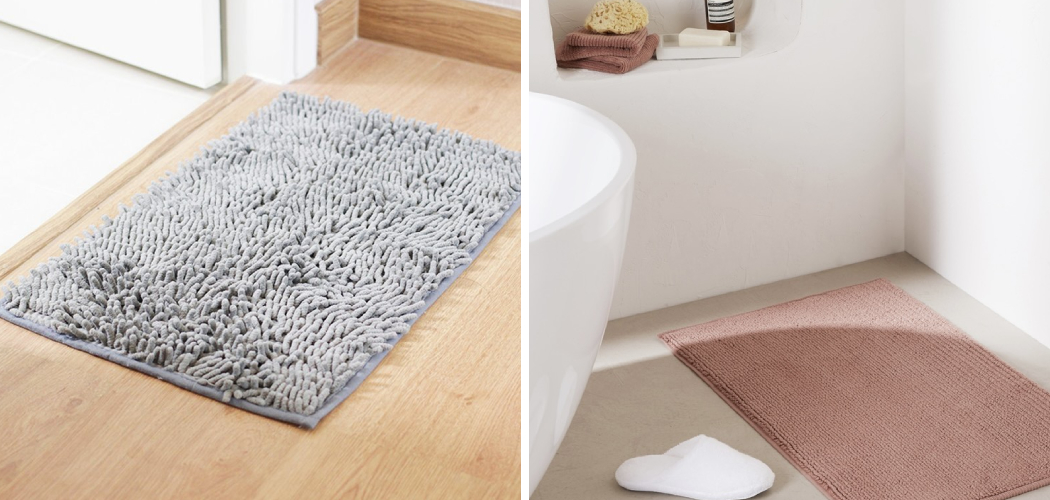Maintaining cleanliness and hygiene in your bathroom is crucial, and one often overlooked aspect is the regular washing of bathroom mats. Bathroom mats can harbor significant dirt, moisture, and bacteria, making them a potential health hazard if not cleaned regularly. Common materials for bathroom mats include cotton, microfiber, chenille, memory foam, and rubber.
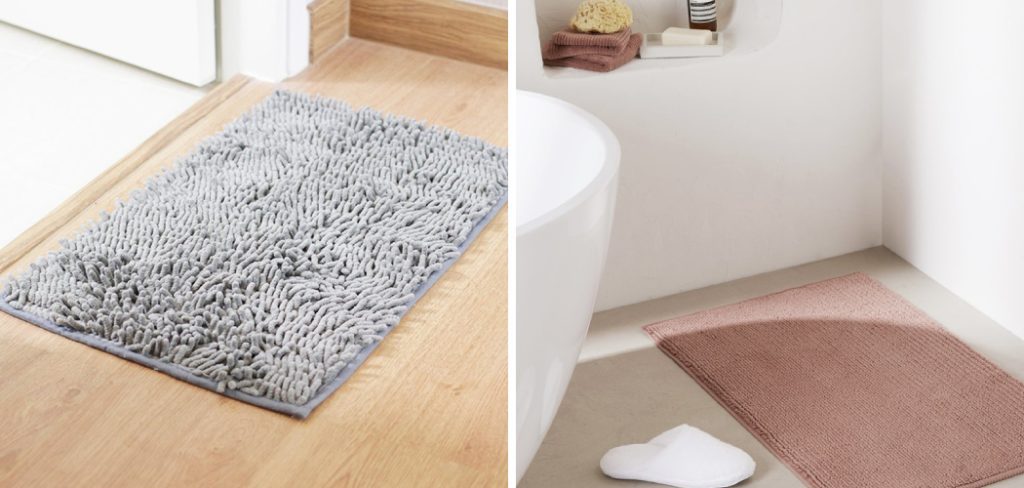
Each material requires specific care to ensure its longevity and effectiveness. This guide will provide you with the best practices on how to wash bathroom mats, covering various washing methods to help you maintain their quality. By following these methods, you can ensure that your bathroom mat remains clean, hygienic, and durable for an extended period.
Preparing for Washing
Check Washing Instructions
Before washing your bathroom mat, reviewing the manufacturer’s label for specific care instructions is essential. These labels often provide crucial information regarding whether the mat is machine washable or requires hand washing. Additionally, the label will usually include guidelines for the appropriate water temperature settings and recommended types of detergents.
This step is vital as it helps preserve the mat’s quality and ensures effective cleaning. For example, cotton mats may be washed in warm water, while memory foam mats often need cold water to maintain their shape and texture. Avoid using bleach or harsh chemicals unless explicitly stated on the label, as they can damage the mat’s material.
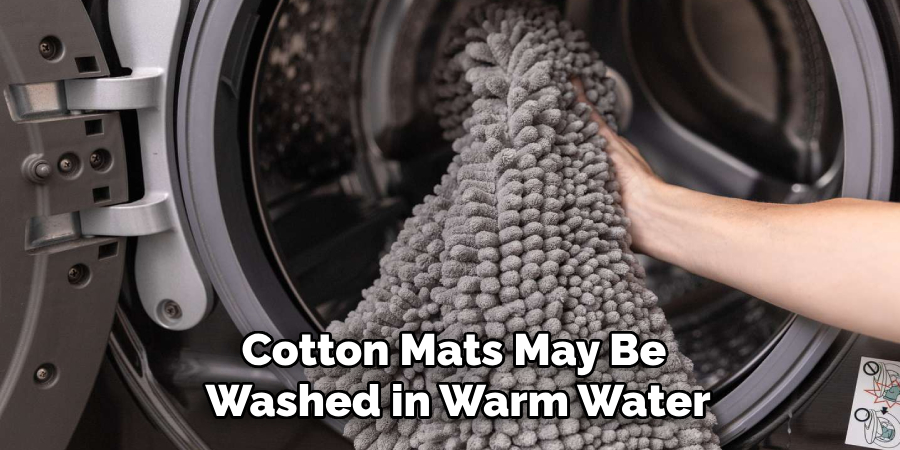
Shake Out Excess Debris
Before washing, it is best to shake out any excess debris or loose dirt from the bathroom mat. This step will help prevent clogging your washing machine and ensure a cleaner wash. You can also use a vacuum cleaner to remove stubborn debris or pet hair from the mat’s surface.
Pre-Treat Stains
If your bathroom mat has visible stains, you may want to pre-treat them before washing. For tough stains such as mildew or mold, mix equal parts of water and white vinegar in a spray bottle and spritz it onto the affected area. Let it sit for 15-20 minutes before scrubbing with a brush and rinsing with clean water. For other stains, you can use a pre-treatment stain remover or a paste of baking soda and water.
How to Wash Bathroom Mat: Machine Washing
Loading the Machine
Properly placing the mat in the washing machine is crucial to achieve optimal cleaning results. Ensure that the mat has enough space to move freely within the drum, allowing thorough agitation and rinsing. Overloading the machine can lead to inadequate cleaning and potential damage to the mat and the machine. If you have multiple mats to wash, consider washing them separately or combining them with a few towels. The towels can act as additional scrubbers, helping to enhance the cleaning process. Always check the machine’s capacity guidelines to avoid overloading.
Selecting the Right Cycle and Temperature
Choosing the correct cycle and temperature settings for washing your bathroom mat is essential to protect its fibers. Opt for a gentle or delicate cycle, which minimizes agitation and reduces the risk of damaging the mat’s material. Most bathroom mats can be washed in warm water, but some materials, like memory foam, may require cold water to maintain their shape and integrity. Always refer to the care label for specific temperature recommendations to avoid shrinking or other damage.
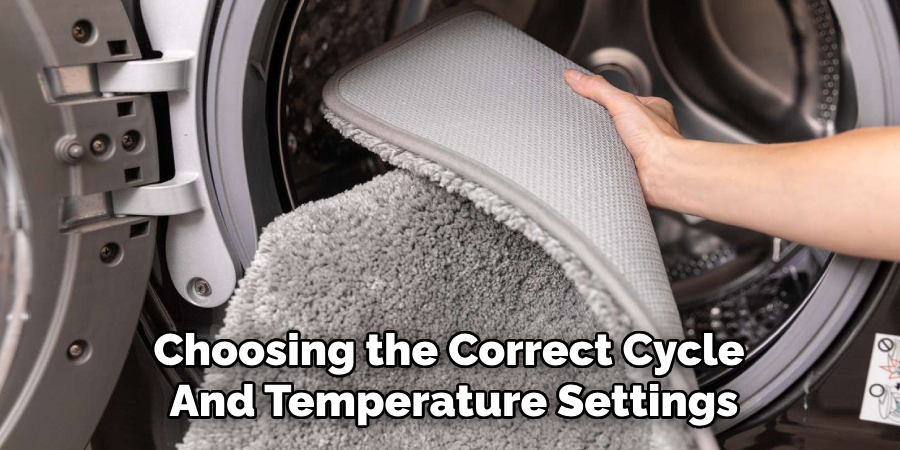
Using the Appropriate Detergent
Select a mild detergent suitable for the mat’s material, avoiding bleach or harsh chemicals that could degrade the fibers. Use the detergent sparingly, following the guidelines provided on the packaging. Overusing detergent can result in residue buildup, which may affect the mat’s texture and absorbency. Using the appropriate amount ensures that the mat is thoroughly cleaned and rinsed, maintaining its quality and longevity.
How to Wash Bathroom Mat: Hand Washing
Preparing the Washing Solution
To hand wash your bathroom mat, prepare an appropriate washing solution. Fill a tub or basin with lukewarm water, ensuring the temperature is comfortable but not too hot to prevent any potential damage to the mat’s material. Add a small amount of gentle detergent to the water. It’s important to choose a detergent that does not contain any harsh chemicals or bleach, as these can degrade the mat’s fibers over time.
Use your hand to mix the water and detergent thoroughly, creating a sudsy solution. This bubbly mixture will help break down dirt and debris, making it easier to clean the mat effectively. Ensuring that the detergent is well-dissolved will also prevent any residue from forming on the mat during the washing process.
Soaking and Washing
Once your washing solution is ready, submerge the bath mat into the soapy water. Gently agitate the water by swishing the mat around. This action helps to loosen any embedded dirt and stains. Let the mat soak for about 10-15 minutes, giving the detergent time to work through the fibers and dissolve the grime. After soaking, focus on any stubborn spots that still appear dirty or stained.
Use a soft brush or cloth to scrub these areas gently. Be careful not to be overly aggressive as vigorous scrubbing can damage the mat’s material. Continue to scrub until the dirt and stains are adequately removed. Once you are satisfied with the cleaning, thoroughly rinse the mat with clean water to remove any remaining soap residue. Finally, gently squeeze out excess water without wringing the mat too forcefully to avoid damaging its fibers.
Drying the Mat
Air Drying
After washing, the best way to dry your bathroom mat is to hang it outdoors or place it on a drying rack in a well-ventilated area. Ensure the mat is away from direct sunlight, as prolonged exposure to UV rays can fade its colors and weaken its fibers. Good air circulation is crucial to evenly drying the mat and preventing mold or mildew growth. Shake the mat vigorously to help dislodge any remaining water and reduce drying time. It is also advisable to flip the mat occasionally to ensure that both sides dry thoroughly.

Machine Drying
If the manufacturer’s label indicates that the mat is safe for machine drying, use a low heat setting to minimize the risk of damaging the material. Periodically check the mat during the drying cycle to avoid overheating and potential shrinkage. Once the drying cycle is complete, you can employ techniques to restore the mat’s softness and shape. For instance, giving the mat a good shake helps to fluff it up, making it feel plush and comfortable. Additionally, you can gently brush the fibers with a soft brush to enhance their texture and appearance.
Regular Maintenance Tips
Maintaining the cleanliness and quality of your bathroom mat regularly is crucial to ensure its longevity and functionality. Besides full-scale washing, incorporating regular maintenance routines will help keep the mat looking fresh and in good condition. One of the simplest ways to keep your mat clean is to vacuum it regularly. Vacuuming helps remove surface dirt and debris that accumulate with daily use. Shaking out the mat outside can also dislodge particles caught in the fibers.
Additionally, keeping the bathroom itself clean by wiping down surfaces and mopping floors will reduce the amount of dirt that transfers to the mat. Rotate the mat periodically to ensure even wear, and consider using multiple mats if your bathroom experiences high traffic. Regular maintenance preserves the mat’s appearance and minimizes wear and tear, keeping it comfortable and hygienic for longer periods.
Cleaning Frequency
Washing bathroom mats at least once every two weeks is recommended under typical usage conditions. However, if the bathroom has high traffic or the mat is exposed to frequent moisture, more frequent washing may be necessary, such as once a week. Ensuring that mats are cleaned regularly is paramount to preventing bacteria, mold, and mildew buildup, which can lead to unpleasant odors and potential health risks. Regular maintenance washes help maintain the mat’s absorbency, softness, and aesthetic appeal, ensuring it continues to serve its purpose effectively. By adhering to a consistent cleaning schedule, you can significantly extend the lifespan of your bathroom mat, keeping it fresh and inviting.
Spot Cleaning
For small spills or stains between regular washings, spot cleaning is an efficient method to keep your bathroom mat looking its best. To address minor stains quickly, use mild detergent and water or employ natural cleaning remedies such as baking soda and vinegar. Apply the solution to the affected area using a soft cloth or sponge, gently blotting rather than rubbing to avoid damaging the fibers. Once the stain is removed, rinse the area with clean water and pat dry with a towel.
Spot cleaning not only preserves the mat’s overall cleanliness but also prevents stains from setting in and becoming more challenging to remove during full-scale washes. Regular spot treatments ensure your mat remains pristine and ready for everyday use.
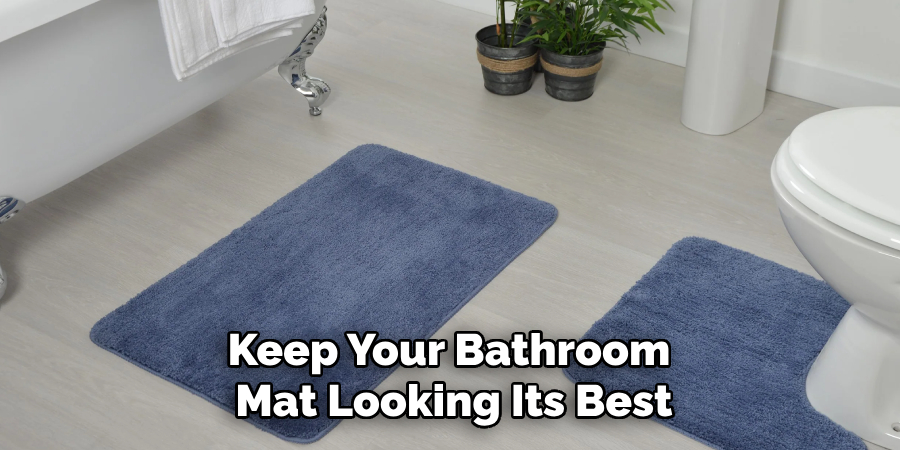
Conclusion
Maintaining the cleanliness and hygiene of bathroom mats involves knowing how to wash bathroom mats properly. From creating a suitable washing solution with a gentle detergent to carefully soaking, washing, and drying, each step plays a crucial role in preserving the mat’s quality. When done correctly, Air and machine drying help retain the mat’s softness and longevity. Regular maintenance, such as vacuuming, spot cleaning, and rotating the mat, reduces the accumulation of dirt and wear.
You can keep your bathroom mat fresh and inviting by following care instructions diligently and incorporating regular cleaning routines. Prioritizing mat care ensures that your bathroom remains a hygienic and comfortable space for daily use, reflecting attentiveness to both cleanliness and comfort.

